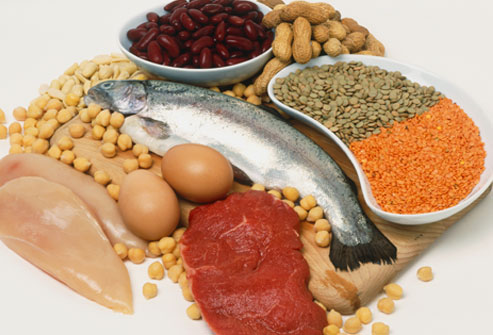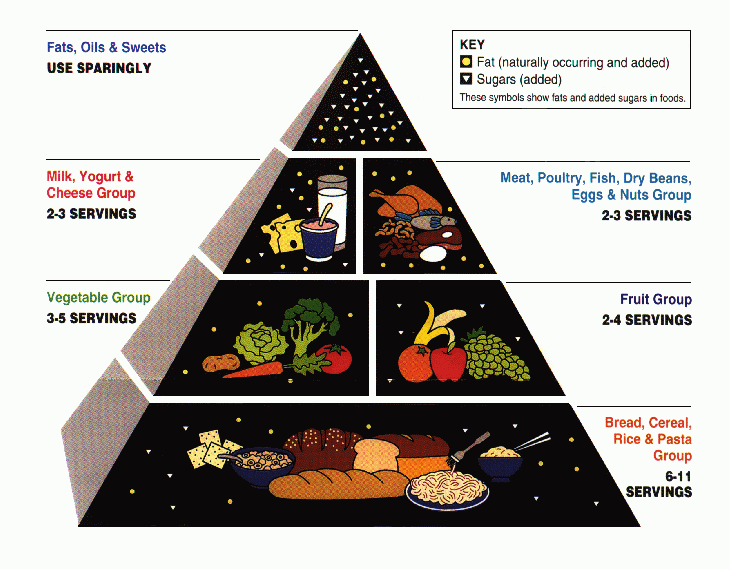DIGESTIVE SYSTEM
The digestive is a group of organs working together to convert food into energy and basic nutrients to feed the entire body. Food passes through a long tube inside the body known as the alimentary canal or the gastrointestinal tract. The alimentary canal is made up of the oral cavity, pharynx, esophagus, stomach, small intestine and large intestines.
In addition to the alimentary canal, there are several important accessory organs that help your body to digest food but do not have food pass through them. Accessory organs of the digestive system include the teeth, tongue, salivary glands, liver, gall bladder and pancreas.
To achieve the goal of providing energy and nutrients to the body, six major functions take place in the the digestive system :
- Ingestion
- Secretion
- Mixing and movement
- Digestion
- Absorption
- Excretion
PARTS OF DIGESTIVE SYSTEM
1. MOUTH
The mouth is the beginning of the digestive tract and in fact, digestion starts here when taking the first bite of food chewing breaks the food into pieces that are more easily digested, while saliva mixes with food to begin the process of breaking it down into a form your body can absorb and use.
2. ESOPHAGUS
It is located in your throat near your trachea, the esophagus receives food from your mouth when you swallow. By means of a series of muscular contractions called peristalsis, the esophagus delivers food to your stomach.
3. STOMACH
The stomach is a hollow organ or container that holds food while it is being mixed with enzymes that continue the process of breaking down food into a usable form.
Cells in the lining of the stomach secrete a strong acid and powerful enzymes that are responsible for the breakdown process. When the contents of stomach are sufficiently processed , they are released into small intestine.
4. SMALL INTESTINE
Made up of three segments- The duodenum, jejenum, and ileum- The small intestine is a 22 foot long muscular tube that breaks down food using enzymes released by the pancreas and and bile from the liver. Peristalsis also is at work in this organ, moving food through and mixing it with digestive secretions from the pancreas and liver. The duodenum is largely responsible for absorption of nutrients in the bloodstream.
Contents of the small intestine start out semi-solid and end in a liquid form after passing through the organ. Water, bile enzymes and mucous contribute to the change in consistency. Once the nutrients have been absorbed and the left- over food residue liquid has passed through the small intestine , it then moves on to the large intestine or colon.
5. PANCREAS
The pancreas secretes digestive enzymes into the duodenum, the first segment of the small intestine. These enzymes breakdown proteins, fats and carbohydrates.
The pancreas also makes insulin, secreting it directly into the bloodstream.
Insulin is the chief hormone for metabolizing sugar.
6. LIVER
The liver has multiple functions but its main function within the digestive system is to process nutrients absorbed from the small intestine. Bile from the liver secreted into the small intestine also plays an important role in digesting fat. In addition, the liver is the body's chemical factory. It takes the raw materials absorbed by the intestine and makes all the various chemicals the body needs to function. The liver also detoxifies potentially harmful chemicals. It breaks down and secretes many drugs.
7. GALL BLADDER
The Gall Bladder stores and concentrates bile, and then releases it into the duodenum to help absorb and digest fats.
8. COLON (Large Intestine )
The colon is a 6 foot long muscular tube that connects the small intestine to the rectum. The large intestine ia made up of he caecum, the ascending colon, descending colon, and the sigmoid colon which connects to the rectum. The Appendix is a small tube attached to the caecum. The Large intestine is a highly specialized organ that is responsible for processing waste so that emptying the bowels is easy and convenient. Stool or water left over from the digestive process is passed through the colon by means of peristalsis, first in liquid state and ultimately in a solid form. As stool passes through the colon, water is removed.
Stool or water left over from the digestive process is passed through the colon by means of peristalsis , first liquid state and ultimately solid state. Stool is stored in the sigmoid colon until a mass movement empties it into the rectum once or twice a day.
It normally takes about 36 hours for stool to get through the colon. The stool itself is mostly food debris and bacteria. When the descending colon becomes full of stool or faeces. It empties its contents into the rectum to begin the process of elimination.
9. RECTUM
The rectum is an 8-inch chamber that connects the colon to the anus. It is the rectum's job to receive stool from the colon to let the person know that there is stool from the colon to let the person know that there is stool to be evacuated and to hold the stool until evacuation.
When anything comes into the rectum, Sensors send a message to the brain. The brain then decides if the rectal contents can be released or not. If they can , the sphincters relax and the rectum contracts, disposing its contents. If the contents cannot be disposed, the sphincter contracts and the rectum accomodates so that sensation temporarily goes away.
10. ANUS
The anus is the last part of the digestive system. It is a 2 inch long canal consisting of the pelvic floor muscles and the two anal sphincters. The lining of the upper anus is specialized to detect rectal contents. It lets you know whether the contents are liquid, gas or solid.
The anus is surrounded by sphincter muscles that are important in allowing control of stool.
The pelvic floor muscle creates an angle between the rectum and the anus that stops stool enters the rectum. When we get an urge to go to the bathroom, we rely on our external sphincter to hold the stool until reaching a toilet, where it then releases the contents.
Contents of the small intestine start out semi-solid and end in a liquid form after passing through the organ. Water, bile enzymes and mucous contribute to the change in consistency. Once the nutrients have been absorbed and the left- over food residue liquid has passed through the small intestine , it then moves on to the large intestine or colon.
5. PANCREAS
The pancreas secretes digestive enzymes into the duodenum, the first segment of the small intestine. These enzymes breakdown proteins, fats and carbohydrates.
The pancreas also makes insulin, secreting it directly into the bloodstream.
Insulin is the chief hormone for metabolizing sugar.
6. LIVER
The liver has multiple functions but its main function within the digestive system is to process nutrients absorbed from the small intestine. Bile from the liver secreted into the small intestine also plays an important role in digesting fat. In addition, the liver is the body's chemical factory. It takes the raw materials absorbed by the intestine and makes all the various chemicals the body needs to function. The liver also detoxifies potentially harmful chemicals. It breaks down and secretes many drugs.
7. GALL BLADDER
The Gall Bladder stores and concentrates bile, and then releases it into the duodenum to help absorb and digest fats.
8. COLON (Large Intestine )
The colon is a 6 foot long muscular tube that connects the small intestine to the rectum. The large intestine ia made up of he caecum, the ascending colon, descending colon, and the sigmoid colon which connects to the rectum. The Appendix is a small tube attached to the caecum. The Large intestine is a highly specialized organ that is responsible for processing waste so that emptying the bowels is easy and convenient. Stool or water left over from the digestive process is passed through the colon by means of peristalsis, first in liquid state and ultimately in a solid form. As stool passes through the colon, water is removed.
Stool or water left over from the digestive process is passed through the colon by means of peristalsis , first liquid state and ultimately solid state. Stool is stored in the sigmoid colon until a mass movement empties it into the rectum once or twice a day.
It normally takes about 36 hours for stool to get through the colon. The stool itself is mostly food debris and bacteria. When the descending colon becomes full of stool or faeces. It empties its contents into the rectum to begin the process of elimination.
9. RECTUM
The rectum is an 8-inch chamber that connects the colon to the anus. It is the rectum's job to receive stool from the colon to let the person know that there is stool from the colon to let the person know that there is stool to be evacuated and to hold the stool until evacuation.
When anything comes into the rectum, Sensors send a message to the brain. The brain then decides if the rectal contents can be released or not. If they can , the sphincters relax and the rectum contracts, disposing its contents. If the contents cannot be disposed, the sphincter contracts and the rectum accomodates so that sensation temporarily goes away.
10. ANUS
The anus is the last part of the digestive system. It is a 2 inch long canal consisting of the pelvic floor muscles and the two anal sphincters. The lining of the upper anus is specialized to detect rectal contents. It lets you know whether the contents are liquid, gas or solid.
The anus is surrounded by sphincter muscles that are important in allowing control of stool.
The pelvic floor muscle creates an angle between the rectum and the anus that stops stool enters the rectum. When we get an urge to go to the bathroom, we rely on our external sphincter to hold the stool until reaching a toilet, where it then releases the contents.

video on digestive system
DIGESTION
Digestion refers to the breakdown of food into smaller components that can be absorbed into the bloodstream. This digestion or catabolism is divided into two types – the mechanical digestion of food that occurs in the mouth when it is physically broken up into smaller pieces and the chemical digestion that occurs in the gastrointestinal tract when the food is broken down into small molecules by digestive enzymes.
COMMON DIGESTIVE PROBLEMS
- Constipation
Constipation is a condition in which you typically have:
- fewer than three bowel movements a week
- bowel movements with stools that are hard, dry, and small, making them painful or difficult to pass
Some people think they are constipated if they don’t have a bowel movement every day. However, people can have different bowel movement patterns. Some people may have three bowel movements a day. Other people may only have three bowel movements a week.
Constipation most often lasts for only a short time and is not dangerous. You can take steps to prevent or relieve constipation.
2. Gall Stones
Gallstones are hard particles that develop in the gallbladder. The gallbladder is a small, pear-shaped organ located in the upper right abdomen—the area between the chest and hips—below the liver.
Gallstones can range in size from a grain of sand to a golf ball. The gallbladder can develop a single large gallstone, hundreds of tiny stones, or both small and large stones. Gallstones can cause sudden pain in the upper right abdomen. This pain, called a gallbladder attack or biliary colic, occurs when gallstones block the ducts of the biliary tract.
3. Indigestion
Indigestion, also known as dyspepsia, is a term used to describe one or more symptoms including a feeling of fullness during a meal, uncomfortable fullness after a meal, and burning or pain in the upper abdomen.










